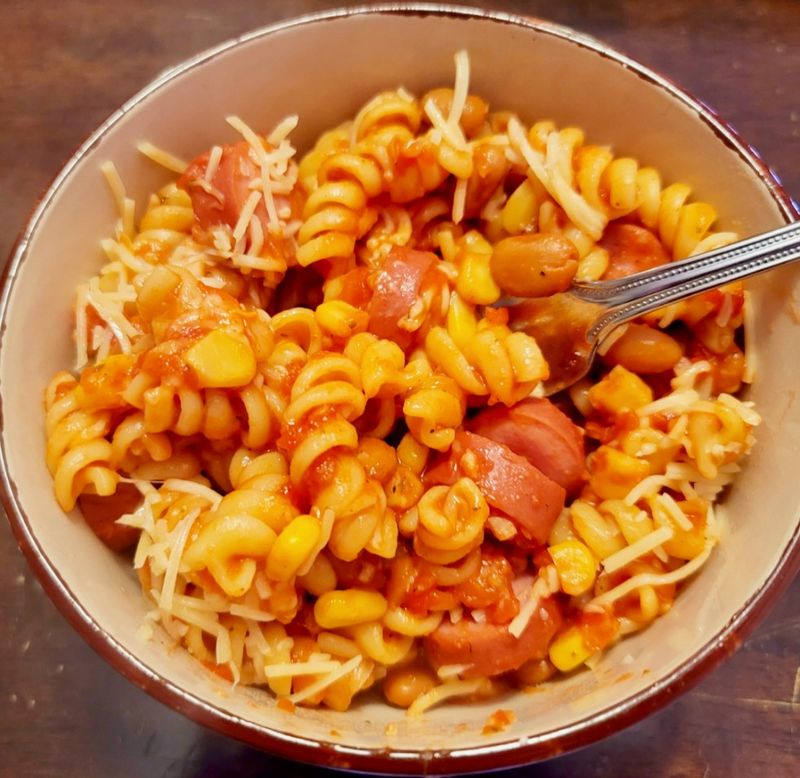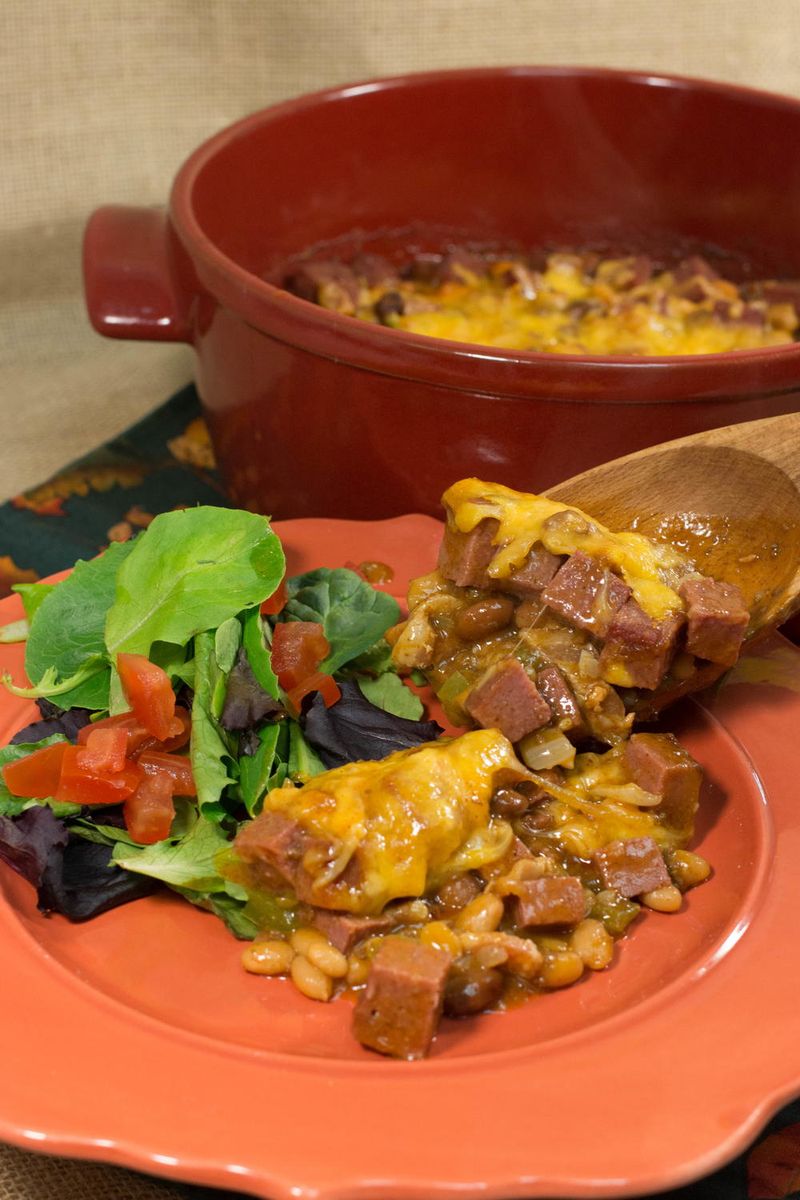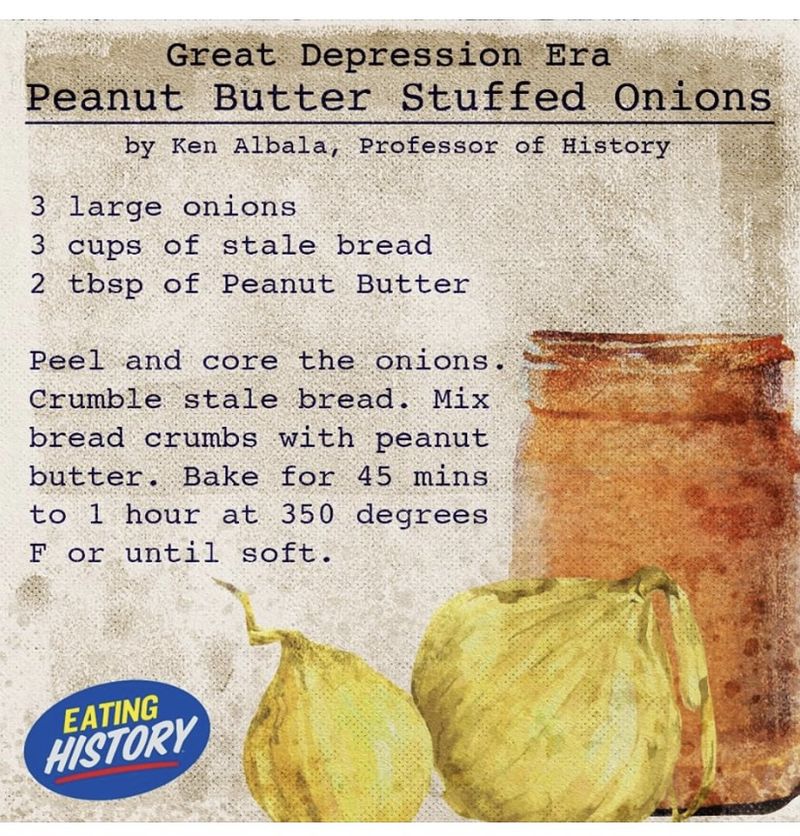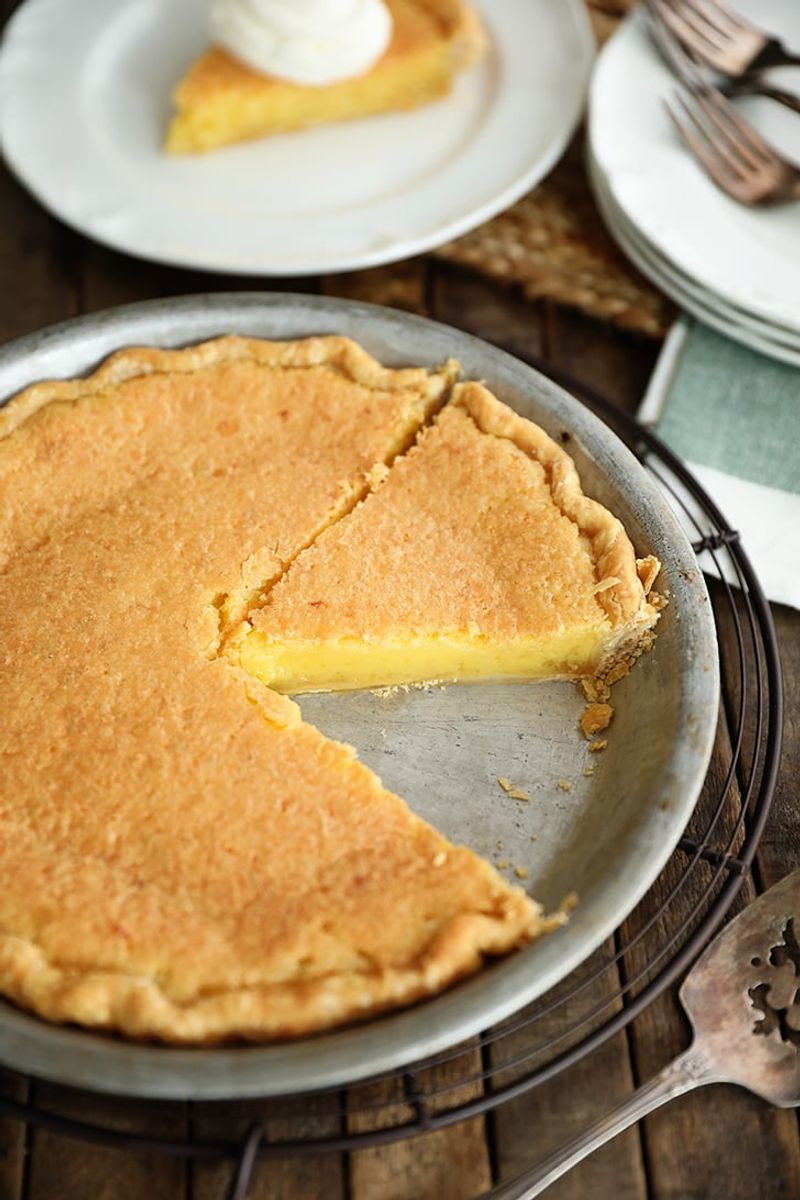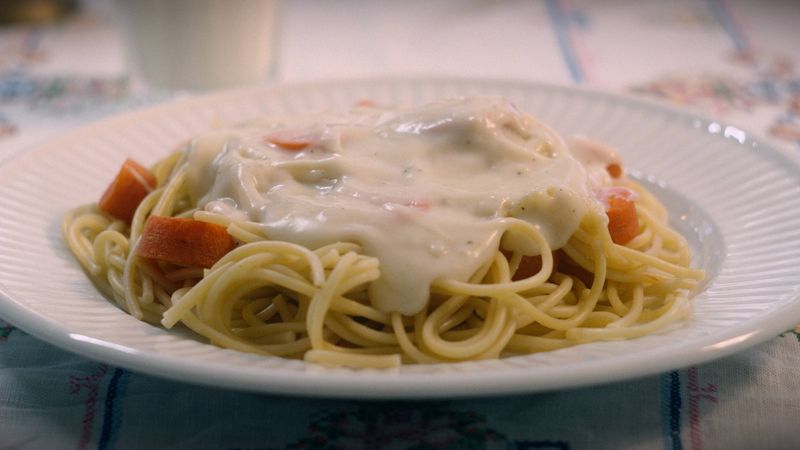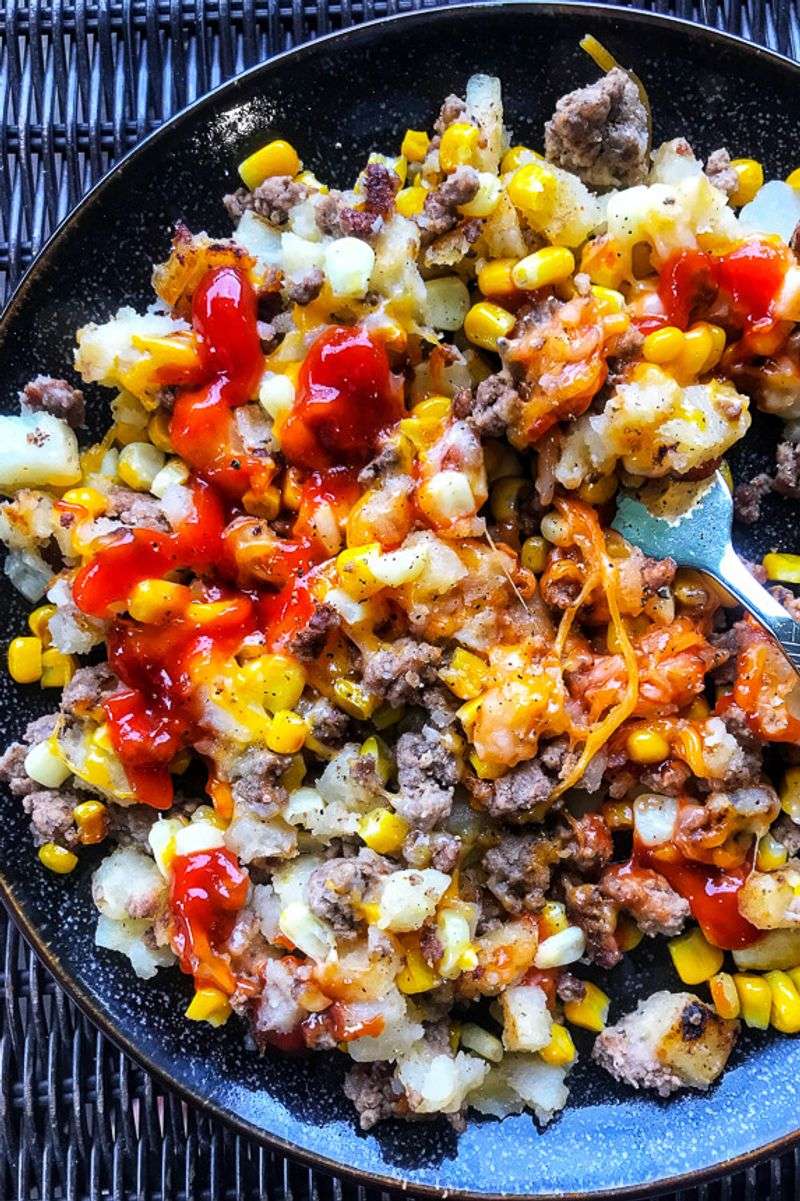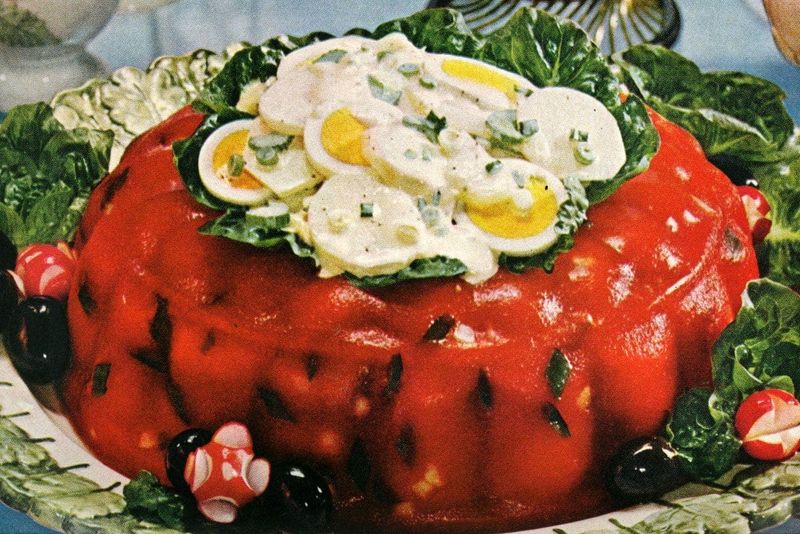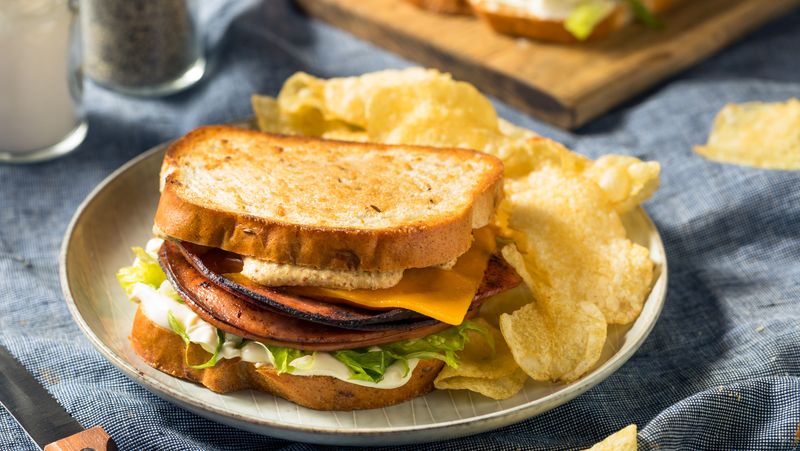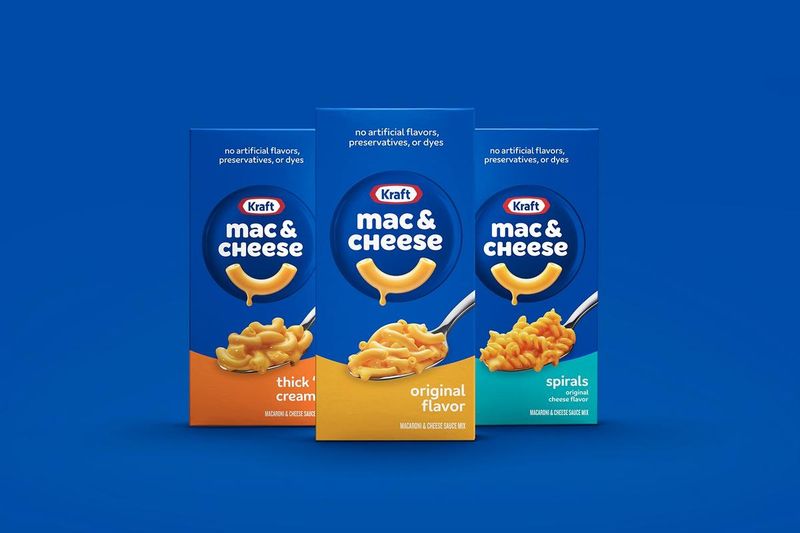During hard times, American families had to get creative in the kitchen. The Great Depression left a lasting impact on cooking habits, with many budget-friendly recipes continuing well into the 1960s. These humble dishes weren’t just about filling empty stomachs – they represented the incredible resourcefulness of ordinary people making the most of what little they had.
1. Creamed Chipped Beef on Toast
Known affectionately (or not so affectionately) as “S.O.S” among military families, this protein-stretching marvel consisted of dried beef slivers swimming in a thick flour-based gravy ladled over toast. The salty meat provided flavor while the creamy sauce added bulk. Families could feed four people with just a small package of dried beef. Many mothers kept the ingredients on hand for quick weeknight meals when paychecks ran low. The dish gained popularity during WWII before becoming a budget staple in the ’60s when many households still struggled financially despite the economic boom.
2. Hoover Stew
Named sarcastically after President Herbert Hoover, this filling concoction stretched a few hot dogs into a meal for many. Chopped frankfurters, macaroni, canned tomatoes, and whatever vegetables were available simmered together in one pot. Families could adjust ingredients based on what was in the pantry. School cafeterias served versions of this budget-friendly stew throughout the ’60s. The beauty of Hoover Stew lay in its flexibility – leftover beans, corn, or even cabbage could be tossed in without ruining the dish. Children often didn’t realize they were eating “poor food” since the hot dogs made it seem special.
3. Potato Pancakes
Humble potatoes transformed into something magical when grated and mixed with a bit of flour, salt, and an egg if you were lucky. Fried until crispy in whatever fat was available, these filling pancakes made stomachs feel full when meat wasn’t an option. Leftover mashed potatoes found new life formed into patties and pan-fried until golden. Some families added grated onion for extra flavor or served them with homemade applesauce. Saturday mornings often featured these crispy delights as a special breakfast. The satisfying sound of sizzling potatoes hitting hot oil signaled a treat that cost just pennies per serving yet delivered sustaining energy for hardworking families.
4. Milk Toast
Morning rituals don’t get simpler than this: buttered toast soaked in warm milk, sometimes sweetened with a precious spoonful of sugar or drizzle of molasses. For many children of the ’60s, this humble breakfast brings back powerful memories of grandmothers in housecoats tending the stove. The dish originated as an easily digestible meal for the sick or elderly. It later became a practical way to use stale bread and provide calcium when fresh fruit wasn’t affordable. Families would gather around kitchen tables with steaming bowls, the soft bread providing comfort on cold mornings. The simplicity belied how nourishing this meal could be when resources were scarce.
5. Bologna Casserole
Casseroles reigned supreme in ’60s kitchens, with bologna versions offering an affordable twist on meat dishes. Sliced bologna layered with potatoes, beans, and sometimes cheese created a hearty dinner that mimicked more expensive meals. Home economists promoted this dish in women’s magazines as a “creative” use of budget ingredients. The bologna would crisp slightly at the edges while baking, creating textural contrast with the soft vegetables beneath. Families gathered around the table would find comfort in the warm, filling dish. Children particularly enjoyed the familiar flavor of bologna transformed into something that felt like a special dinner, often unaware of the financial necessity behind its creation.
6. Dandelion Salad
Free food grew right in the backyard! Young dandelion greens, harvested before flowering, provided vital nutrients when grocery money ran short. Families would send children out with baskets to gather these slightly bitter greens. Dressed simply with vinegar and bacon drippings, dandelion salad represented resourcefulness at its finest. Some households added hard-boiled eggs for protein or wild onions for extra flavor. This foraged dish carried cultural significance beyond mere sustenance. Grandmothers passed down knowledge about which plants were safe to eat and when to harvest them. For many families, dandelion picking signaled spring’s arrival and connected them to older traditions of living off the land during difficult times.
7. Peanut Butter-Stuffed Onions
Strange combinations emerged when hunger met creativity. Large sweet onions, hollowed out and filled with peanut butter, then baked until tender, provided both protein and vegetables in one unusual package. Home economics teachers actually recommended this bizarre creation during lean times! The natural sweetness of cooked onions surprisingly complemented the nutty filling, creating a dish that stuck to ribs and stretched a jar of peanut butter across multiple meals. Children often approached this concoction with suspicion, but empty stomachs made them less picky. The dish represented the extreme measures families took to create filling meals when conventional options weren’t available – proving that necessity truly is the mother of culinary invention.
8. Vinegar Pie
When fruit trees stood bare and pantries emptier still, clever cooks created “mock fruit pies” using vinegar’s tangy bite. This ingenious dessert combined sugar, butter, and a splash of apple cider vinegar in a simple pie crust, creating a sweet-tart filling reminiscent of apple pie. The chemical reaction between the ingredients produced a surprisingly pleasant custard-like texture. Families saved these treats for Sunday dinners or special occasions, creating normalcy during difficult times. Grandmothers who lived through the Depression often continued making these pies into the ’60s, even when real fruit was available. The recipe represented resilience and resourcefulness passed down through generations – a sweet reminder that creativity could overcome scarcity.
9. Spaghetti with Carrots & White Sauce
Italian-inspired yet distinctly Depression-born, this humble pasta dish made the most of inexpensive ingredients. Overcooked spaghetti (stretching it further by softening) mixed with boiled carrot coins and a simple white sauce made from flour, butter, and milk. The bland palette didn’t win culinary awards but filled empty stomachs. Sometimes a sprinkle of government cheese added protein and flavor when available. Mothers would serve this meal with pride, often adding a slice of bread on the side to sop up every bit of sauce. Children growing up in the ’60s recall the soft textures and mild flavors as comforting rather than depressing – a testament to how family love could transform even the simplest meal into something special.
10. Garbage Mashup
Despite its unappetizing name, this waste-not-want-not creation saved countless families from hunger. Leftover beans, potatoes, macaroni, and meat scraps found new life mixed together and fried until hot and slightly crispy on the edges. Every family’s version differed based on what needed using up. The beauty lay in its adaptability – nothing edible went to waste when food dollars were precious. Moms would often serve this concoction with a story about “cleaning out the icebox.” Kids rarely complained, as the mixture of textures and flavors was actually quite satisfying. The dish embodied the resourcefulness that defined a generation who lived by the mantra: use it up, wear it out, make it do, or do without.
11. Cornbread in Milk
Southern comfort food at its most economical! Day-old cornbread crumbled into a bowl with cold milk poured over created a cereal-like meal that stuck to ribs without sticking to budgets. Some families added a drizzle of molasses or sorghum for sweetness. The dish originated on farms where cornmeal was plentiful and homegrown. By the ’60s, it remained a breakfast staple in working-class households throughout the South and beyond. Grandparents would reminisce about eating this same meal during their childhoods while serving it to a new generation. The simple combination provided protein, carbohydrates, and comfort – proving that nourishment came from more than just fancy ingredients.
12. Chipped Beef Salad
Gelatin transformed humble ingredients into something “fancy” during tough times. This peculiar creation suspended diced dried beef, mayonnaise, and chopped vegetables in a wobbly aspic mold – creating a meal that looked more impressive than its cheap ingredients suggested. Women’s magazines promoted these molded salads as “modern” and elegant. The beef provided protein while the gelatin (made from affordable packets) gave the illusion of abundance. Served on lettuce leaves for Sunday dinner or church potlucks, these salads helped families maintain dignity during financial struggles. Children of the ’60s remember the distinctive texture combination – simultaneously slippery and chewy – with a mix of nostalgia and mild horror, representing a unique culinary era born from necessity.
13. Fried Bologna
The humble bologna slice transformed when it hit a hot skillet! Frying this inexpensive lunch meat created a crispy-edged protein that mimicked more expensive cuts. The center would puff up as the edges curled, creating a bowl-like shape perfect for holding mustard or ketchup. A single package could provide protein for multiple meals. Some families served it sandwich-style while others paired it with beans or potatoes for a complete dinner. The distinctive sizzle and smoky aroma filled kitchens across America during lean times. Children often preferred this preparation to cold bologna, considering it a treat rather than a compromise. The simple cooking method elevated an ordinary ingredient into something special – a small culinary victory during financially challenging times.
14. Water Pie
Perhaps the most magical transformation of the Depression era: a pie made primarily from water! This culinary sleight-of-hand combined plain water with sugar, flour, and a few drops of vanilla in a pie crust, creating a surprisingly sweet custard-like dessert when baked. The science behind it was simple – heat caused the minimal ingredients to thicken into something resembling more expensive custard pies. Families saved these treats for special occasions, often topping them with a sprinkle of cinnamon to add flavor. The recipe survived into the ’60s as a testament to human ingenuity. Grandmothers would demonstrate this “miracle pie” to wide-eyed grandchildren, passing down not just a recipe but a lesson in making something from almost nothing.
15. Liver on Toast
Organ meats cost pennies when premium cuts were out of reach. Beef liver, boiled until tender then shaved paper-thin (often with a potato peeler!), created delicate slices that mellowed liver’s strong flavor when served on buttered toast. This protein-rich meal supplied essential iron and vitamins. Clever cooks would sometimes add onions fried in bacon grease to make the dish more appealing to reluctant eaters. Many families ate this weekly meal without complaint, understanding the economic necessity. Children who grew up with this dish often developed a taste for liver that continued into adulthood. The preparation represented the waste-not mentality that defined a generation – using every part of an animal out of respect and necessity.
16. Mulligan Stew
Community spirit in a pot! This collaborative creation originated in hobo camps but found its way into neighborhood kitchens during hard times. Families would contribute whatever they could spare – a potato, a carrot, a handful of beans – creating a communal meal greater than its parts. The name came from Irish heritage, but the practice crossed cultural boundaries. Sometimes stretchers like sawdust or extra flour thickened the broth when ingredients were particularly scarce. Neighborhoods in the ’60s still organized “Mulligan” nights during tough economic periods. Children learned valuable lessons about sharing and community support while enjoying the varied flavors. Each pot told a story of cooperation and mutual aid – proving that people could survive difficult times by working together.
17. Kraft Macaroni & Cheese
Born in 1937 during the Depression, this blue box miracle became a ’60s staple as the first generation raised on it began feeding their own families. The brilliant marketing slogan promised “a meal for four in seven minutes for nineteen cents” – music to the ears of struggling parents. The powdered cheese sauce seemed magical to children unaware of financial constraints. Many families stretched the boxes by adding extra noodles, peas, or cut-up hot dogs. Unlike many Depression-era creations, this one survived and thrived into modern times. The distinctive orange color and creamy texture provided comfort during uncertain times. For many Americans who grew up in the ’60s, the blue box represented not deprivation but a treat – proving that clever food science and marketing could transform necessity into desire.


